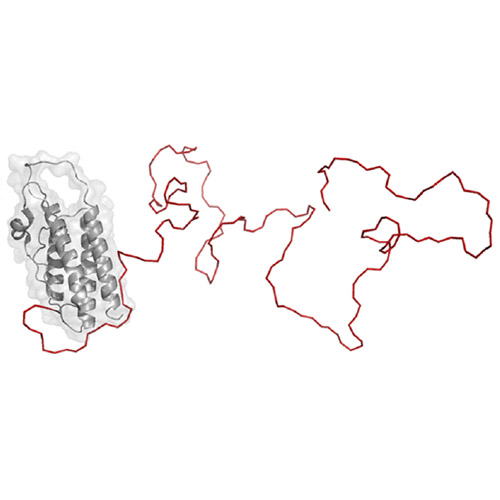PASylation of Murine Leptin Leads to Extended Plasma Half-Life and Enhanced in Vivo Efficacy
26-Mar-2015
Leptin plays a central role in the control of energy homeostasis and appetite and, thus, has attracted attention for therapeutic approaches in spite of its limited pharmacological activity owing to the very short circulation in the body. To improve drug delivery and prolong plasma half-life, we have fused murine leptin with Pro/Ala/Ser (PAS) polypeptides of up to 600 residues, which adopt random coil conformation with expanded hydrodynamic volume in solution and, consequently, retard kidney filtration in a similar manner as polyethylene glycol (PEG). Relative to unmodified leptin, size exclusion chromatography and dynamic light scattering revealed an approximately 21-fold increase in apparent size and a much larger molecular diameter of around 18 nm for PAS(600)-leptin. High receptor-binding activity for all PASylated leptin versions was confirmed in BIAcore measurements and cell-based dual-luciferase assays. Pharmacokinetic studies in mice revealed a much extended plasma half-life after ip injection, from 26 min for the unmodified leptin to 19.6 h for the PAS(600) fusion. In vivo activity was investigated after single ip injection of equimolar doses of each leptin version. Strongly increased and prolonged hypothalamic STAT3 phosphorylation was detected for PAS(600)-leptin. Also, a reduction in daily food intake by up to 60% as well as loss in body weight of >10% lasting for >5 days was observed, whereas unmodified leptin was merely effective for 1 day. Notably, application of a PASylated superactive mouse leptin antagonist (SMLA) led to the opposite effects. Thus, PASylated leptin not only provides a promising reagent to study its physiological role in vivo but also may offer a superior drug candidate for clinical therapy.











